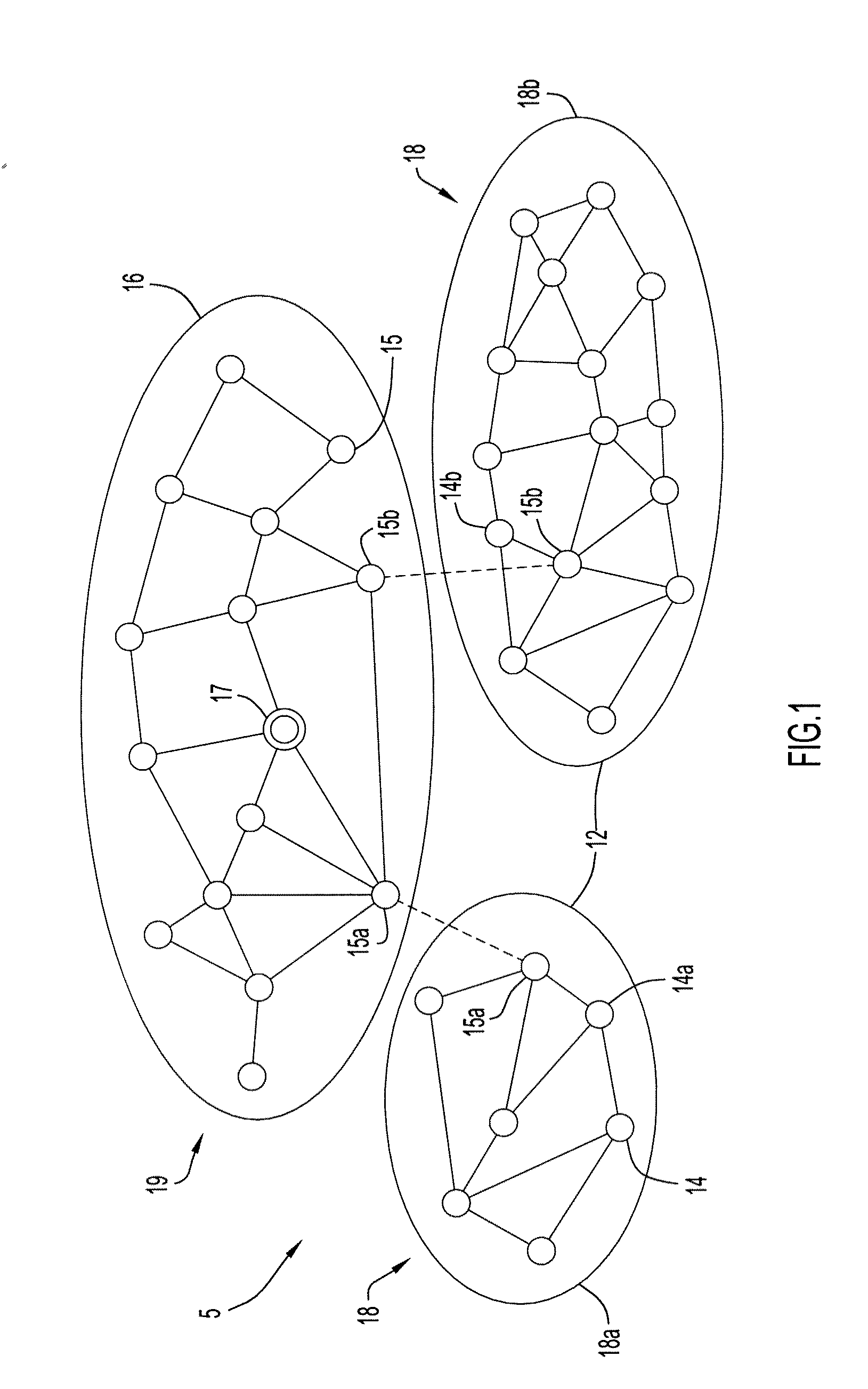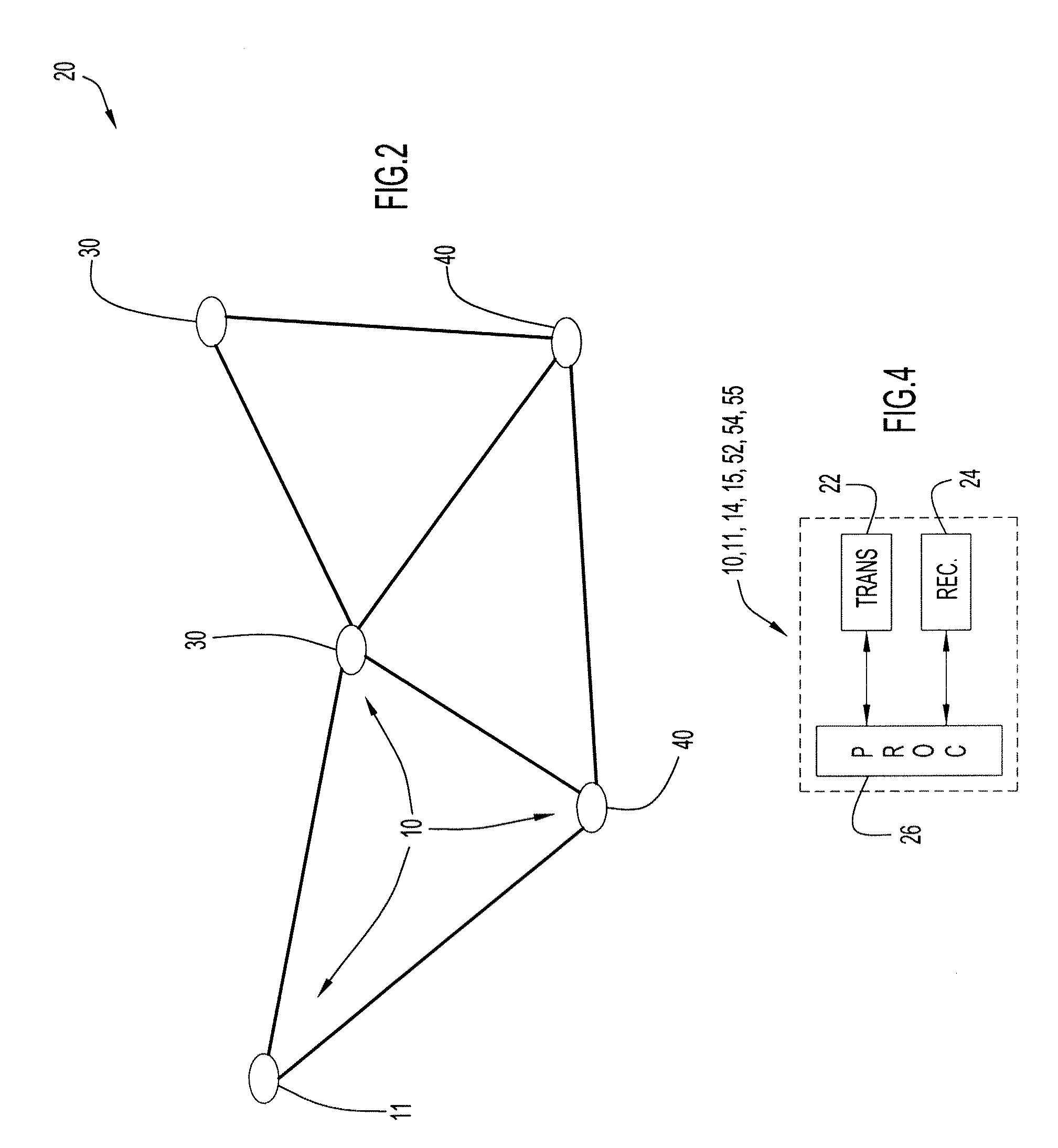Method and Apparatus for Controlling Packet Transmissions Within Wireless Networks to Enhance Network Formation
a wireless network and packet transmission technology, applied in the field of wireless network enhancement, can solve the problems of increasing bandwidth overhead, reducing the transmission speed, and so as to improve the network formation and enhance the network formation in wireless networks. , the effect of reducing the size and amount of prop packets
- Summary
- Abstract
- Description
- Claims
- Application Information
AI Technical Summary
Benefits of technology
Problems solved by technology
Method used
Image
Examples
Embodiment Construction
[0025]The present invention embodiments provide an efficient and reliable packet transmission protocol for the establishment of bi-directional communication links between network nodes and, subsequently, network formation within wireless networks.
[0026]Initially, networking services may be provided for various domains, including plural tier, plural hop networks, single tier, plural hop networks, and tree based networks. An example plural tier, plural hop network is illustrated in FIG. 1. Specifically, a wireless network 5 includes a two-tier architecture, where each tier includes one or more self-contained multi-hop sub-networks or islands 18, 19. Each island 18 is in the form of a flat multi-hop network and includes corresponding island member nodes 14 with one of those member nodes designated as an island head node 15. This type of island arrangement forms a lower tier 12 of network 5, and facilitates communication within an island between the island head and member nodes and betw...
PUM
 Login to View More
Login to View More Abstract
Description
Claims
Application Information
 Login to View More
Login to View More - R&D
- Intellectual Property
- Life Sciences
- Materials
- Tech Scout
- Unparalleled Data Quality
- Higher Quality Content
- 60% Fewer Hallucinations
Browse by: Latest US Patents, China's latest patents, Technical Efficacy Thesaurus, Application Domain, Technology Topic, Popular Technical Reports.
© 2025 PatSnap. All rights reserved.Legal|Privacy policy|Modern Slavery Act Transparency Statement|Sitemap|About US| Contact US: help@patsnap.com



